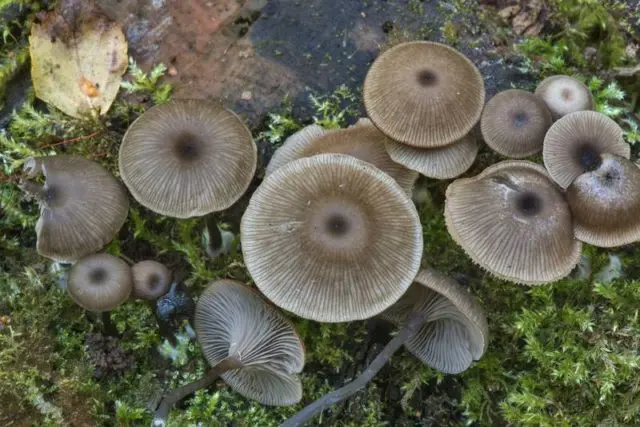Contents
Omphalina cup-shaped or cuboid (lat. Omphalina epichysium), is a mushroom of the Ryadovkovye family (lat. Tricholomataceae), of the order Agarikovye (Agaricales). Another name is Arrenia.

Description of omphalina goblet
Ofmalina goblet – agaric. The cap is small in size – the average diameter is 1-3 cm. Its shape is convex-funnel-shaped. The surface is smooth, with small stripes. The color of the cap is dark brown, sometimes light tones.
The pulp of the fruiting body is thin – about 0,1 cm, watery, brown. Smell and taste – subtle, soft. The plates are wide (0,3 cm), passing to the leg, light gray in color. Spores are thin, smooth, elliptical-oblong in shape. The leg is leveled, smooth, gray-brown in color, 1-2,5 cm long, 2-3 mm wide. In the lower part there is a small white pubescence.

The view is distinguished by a thin leg
Where and how to grow
It grows in small groups on deciduous and coniferous trees. It occurs on the territory of the European part of Our Country, in plantations of various types. Fruiting in spring and autumn.
Is the mushroom edible or not?
The toxicity of Omphalina epichysium has not been studied, therefore it is classified as an inedible species.
Twins and their differences
Omphalina cuboid has no external resemblance to other mushrooms, therefore there are no twins in nature.
Conclusion
Omphalina cup-shaped is a little-studied representative of the “mushroom kingdom”, classified in many sources as inedible. It is not worth risking your health, it is better to bypass it. The main rule of the mushroom picker: “If you’re not sure – don’t take it!”.









